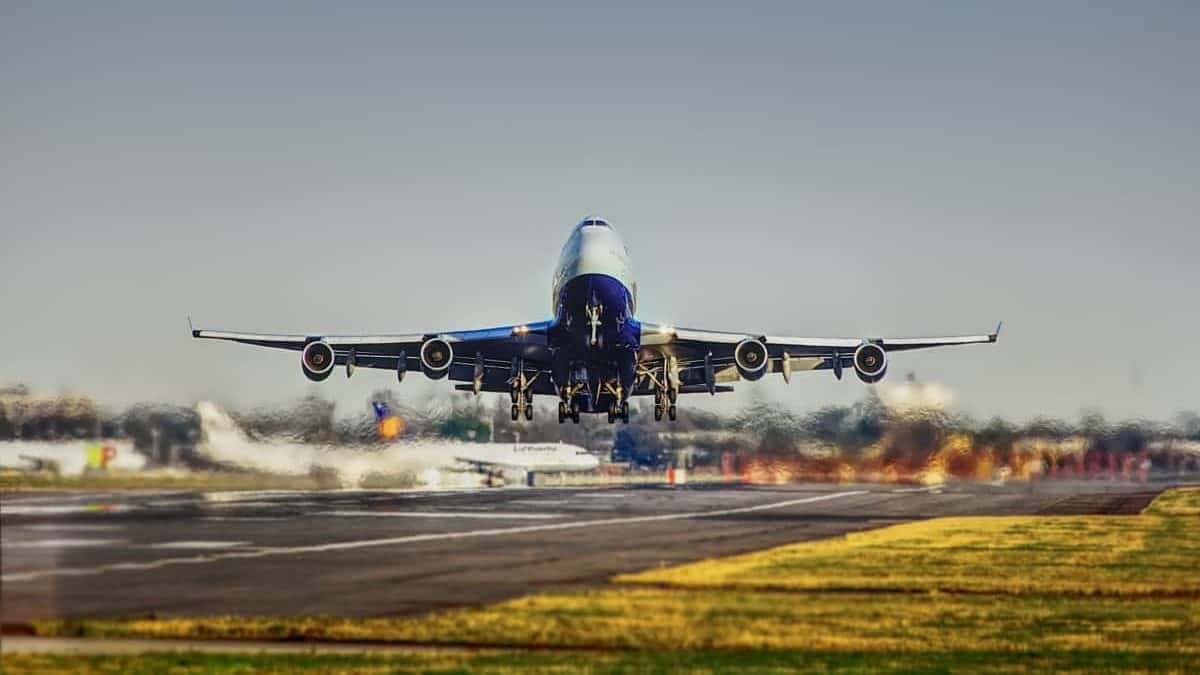Top of Climb, commonly abbreviated as T/C or TOC, is the calculated point at which the aircraft reaches its cruising altitude.
At the Top of Climb, the aircraft levels off and is neither descending nor ascending; the climb phase of flight has now been completed.
It is important that the flight crew have determined T/C prior to departure. This is due to several factors such as communication and coordination with ATC, fuel calculations, and en-route flight planning purposes.
The exact calculated Top of Climb (T/C) point after departure and climb will depend on several factors, relevant to the flight and aircraft type being operated.
T/C can be achieved either by the most optimal and economical rate or by the maximum climb rate. For the purpose of fuel efficiency, most operators will have an economical and efficient climb setting to achieve T/C in the respective Standard Operating Procedures (SOPs).
How Do You Find The Top of Climb (T/C)?
Top of Climb (T/C) can be calculated either manually or automatically, depending on aircraft type, IFR/VFR, and onboard avionics. Under commercial IFR, T/C is generally calculated by the aircraft’s onboard systems.
T/C is calculated automatically via the aircraft’s FMS. The FMS takes in various factors such as:
1. Fuel
The fuel carried onboard the aircraft will contribute to the takeoff weight, which must be included in weight calculations to ensure the aircraft is within certified MTOW limits.
2. Payload
The number of passengers (PAX) and cargo on board must also be accounted for in order to be included in takeoff, climb, and cruise calculations performed by the FMS.
3. Aircraft Climb Performance
Climb performance for aircraft type and installed powerplants along with selected engine thrust settings for takeoff and climb are a primary variable for FMS calculation of T/C.
4. Weather
Weather factors such as winds and jetstreams for the departure airport and surrounding area must be checked prior to flight. The flight crew can enter the wind reports in the FMS.
5. ATC or Waypoint Constraints
In controlled airspace, it is not uncommon for altitude and speed constraints to be enforced at various waypoints throughout a flight, particularly in the initial climb phase of flight.
Along with these waypoint constraints, ATC may not permit aircraft to climb directly to cruise altitude. An initial cruise or target altitude is typically assigned if the airspace is congested.

On Boeing and Airbus aircraft, T/C can be located via the Flightplan (FPL) page of the FMS and by the Navigation Display (N/D). It will be indicated by a distinctive colored marker.
T/C is calculated manually in some instances, prior to flight. It can be determined by taking aircraft speed, climb rate, and cruise altitude targets into account. This can give a time estimate to T/C.
Under VFR, pilots can calculate T/C and climb performance while referencing the aircraft’s performance tables found in the POH (Pilot’s Operating Handbook).
Also Read: Top of Descent (T/D) Calculations
How Long Does It Take To Get To The Top of The Climb?
While the period of time it takes to get from takeoff to T/C will vary based on the factors mentioned above, it can be expected for an aircraft to get to T/C within 30 minutes after departure in most operational circumstances.
As stated above, modern commercial aircraft are equipped with sophisticated FMS and autopilot systems which provide an automated approach to climb performance and T/C calculations.

While T/C differs based on these various factors, the higher the cruise altitude and heavier an aircraft are, the longer the climb phase of flight will be.
On longer flights, the cruise altitude selected after departure may be what is known as a step altitude. A step altitude is part of a series of incremental cruise altitudes, typically used when an aircraft is engaging in step climbing throughout the flight.
Also Read: What Does DECEL Mean? | Aviation Glossary
Other Considerations
T/C is an integral metric used throughout pre-flight planning and en-route performance monitoring. As an aircraft burns the most amount of fuel during the departure and climb phase of flight, it is essential to determine the fuel burn prior to the cruise phase.
Modern commercial aircraft FMS determines EFOB (Estimated Fuel Onboard) for the various points throughout the flight (T/C, waypoints, T/D, etc), however, flight crew have a duty to verify these calculations by regularly monitoring fuel burn and efficiency.
Aside from T/C, the cruise altitude selected for the flight must be optimal and within the aircraft’s limits for the weight configuration and certified service ceiling.

After visiting more than 60 countries, I have probably been on every type of plane there is and visited countless airports. I did my very first international solo trip to South Africa at the age of only 16 and haven’t really stopped traveling since.
Despite the adventurous travel itch, I do have a nerdy side as well – which is satisfied by writing about all things aviation “too boring” for my regular travel blog.

